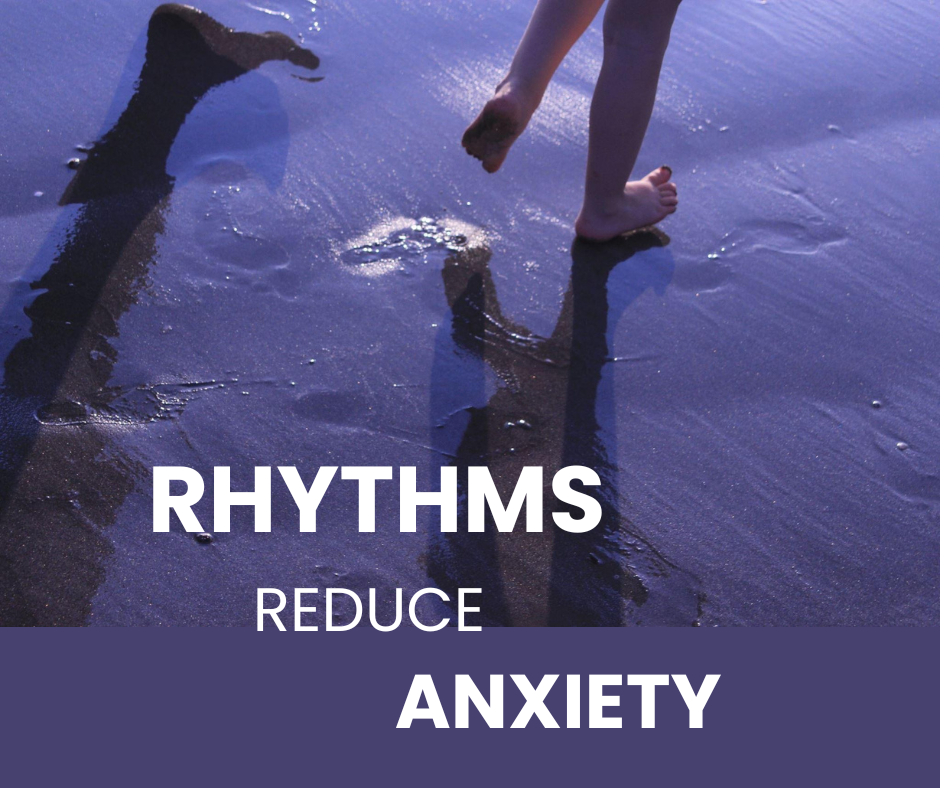
When your child’s world feels predictable, their nervous system can finally exhale and relax. That’s the quiet magic of rhythm and routine.
Research shows that steady family routines—especially around meals, sleep, and transitions—reduce anxiety and dysregulation, and improve behavior and well-being. Isn’t that what we want for all our Sensitive Kids?
Why does rhythm matter so much?
Brains are prediction machines. When life feels uncertain, the “threat alarm” goes off—and for Sensitive Kids, that alarm is triggered easily. Loud noises, unexpected touch, or sudden changes can all feel overwhelming. Living in a body that experiences sensory processing challenges, pain, inflammation, etc. makes the rest of their lives feel equally unpredictable and challenging.
Creating predictable daily rhythms helps balance out the unpredictable. Gentle routines give your child’s body the message: You are safe. You know what happens next. And when their nervous system relaxes, they have more energy to connect, play, and learn.
“One can ascend to a higher development only by bringing rhythm and repetition into one’s life. Rhythm holds sway in all nature.” — Rudolf Steiner
Ways to Bring More Calming Rhythm into Your Family’s Day
Down-time (not every minute needs to be “productive”):
- Balance busy times with calm breaks for both you and your child
- Don’t overpack the schedule with therapies and activities
- Allow time for self-regulation (including stimming)
- Save moments to connect and play—simply enjoy each other
Transitions:
- Allow time for unrushed transitions (a rushed child is an anxious child)
- Create fun, visual schedules with your child’s daily activities
- Give advance notice and countdowns before shifting to something new
- Explain what you are about to do that affects your child—no surprises
Fun rituals and routines:
- Sleep: keep a consistent bedtime routine and lights-out each night
- Meals: have meals at roughly the same time, relaxed and unrushed
- Add simple rituals like a favorite song, short story, or shared gratitude throughout the day
Time outdoors—in sunshine and nature:
- Go outside every day (even in cold weather)
- Outdoor time supports healthy circadian rhythms and regulates the nervous system
Remember! Brains are prediction machines. The systems in the human body that never tire are the ones that function through rhythm—breathing, heartbeat, blood circulation. In fact, we have our own internal biological clock—our circadian rhythm.
Creating daily rhythm is one of the oldest ways families came together in moments of stress. These traditions can help your family transition out of Stress-Mode into Healing and Learning Mode.
Start Here:
Pick one daily rhythm to focus on. Choose the time of day your family feels most rushed or chaotic—morning, bedtime, or mealtime. Create a “buffer”—an unrushed, fun routine for this daily moment. Hold it steady for the next two weeks. Small, consistent shifts make the biggest difference over time.
Every rhythm you create is a gift of safety and connection for your child—and often lowers your own stress too.
What’s one rhythm you’ll start with this week? Hit reply and let me know—I’d love to hear.
Ideas to Create More Rhythm:
- Use music and songs
- Story or poem time
- Gratitude moment
- A walk after dinner
- Photo or memory rituals
- Decorating the house for occasions
- Crafts and arts
- Dance rituals
- Cheers to celebrate
- Prepare meals together


